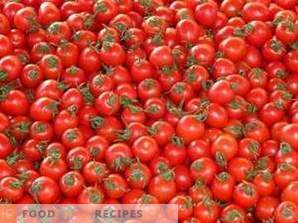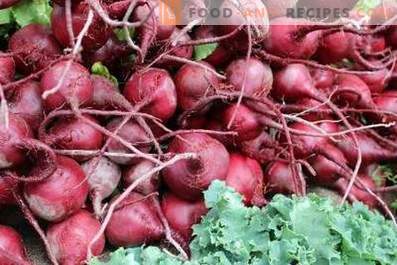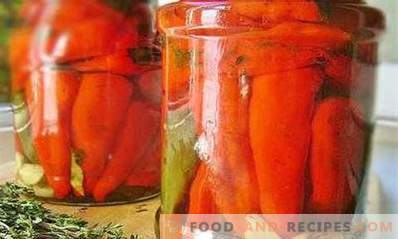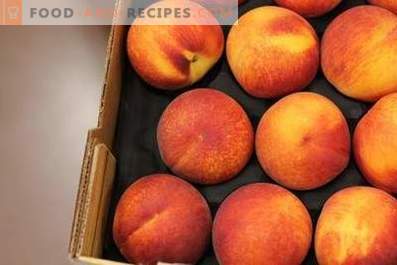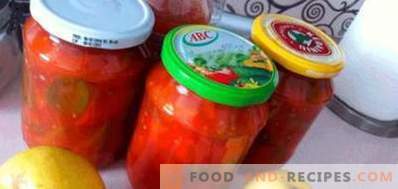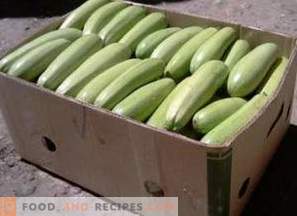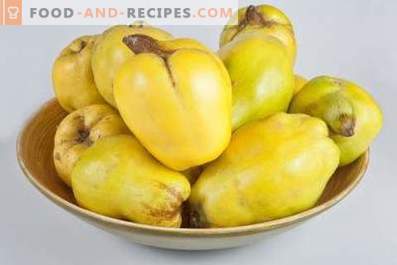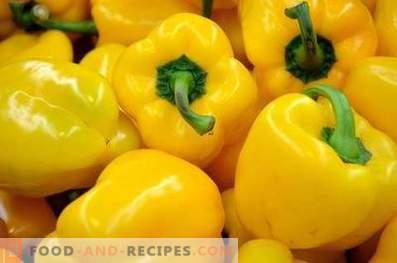
Not every vegetable can boast such a riot of colors, like paprika. Its green, yellow, orange, red, almost brown fruits are not only beautiful, but simply overflowing with useful substances!
Bulgarian pepper has an excellent taste, a pronounced aroma. It is combined with almost all vegetables, so it is added to many dishes.
It does not lose its taste in canning, which is why this fruit is harvested for future use on a par with cucumbers and tomatoes. He marinated, salted, frozen.
In addition to this method of preparation, there is another: Bulgarian pepper can be preserved fresh, and for quite a long time. But for this you need to know which pepper can be put on storage, and which one should be used immediately for food.
When to collect Bulgarian pepper
Pepper ripens unevenly. On the bushes at the same time can hang as green fruit, and orange or red. The fact is that pepper has two degrees of maturity: technical and biological.
Technical maturity pepper is an unripe fruit. It has a green, beige or light red color, dense flesh. It is stuffed, added to salads and snacks, canned. But the main advantages of such pepper is that it can be sent for storage and under favorable conditions it can last until winter without losing its presentation.
Biological (full) maturity occurs approximately 20-25 days later. Pepper turns red, yellow or orange. The walls become fleshy, thick. This pepper is very tasty in any form. But it is not suitable for storage. The fact is that in him and then the process of maturation will continue. And since the pepper has already reached ripeness, it will begin to slowly fade, deteriorate. Bulgarian pepper is a thermophilic plant. It absolutely does not tolerate nighttime cold snaps, therefore cleaning is carried out before the onset of frost. The optimal harvest temperature is + 7-8 °.
During the final harvesting, both green and ripe peppers are removed. Then proceed to sort them.
How to collect bell peppers
Pepper fruits are carefully cut together with the stem, leaving a tail no longer than 2-3 cm long.
Which Bulgarian pepper to be stored
Pepper should be the ideal form, corresponding to this variety.
Deformed fruit, overripe, burst, with mechanical damage for storage are not suitable. Also reject wrinkled fruit, with scratches, stains, with a black coating, signs of rot and damage.
Do not send in storage frozen fruits of the pepper, as well as those that do not have a stem.
It is necessary to pay attention to the tip of the fetus. It should not be lethargic, moist or damaged.
Pepper, which is bought on the market, must be strong, not wrinkled. A freshly cut pepper from a bush has a green stem that is not dried up and certainly not rotted.
It is useful to remind that they do not wash peppers before storage. Dusty fruit can only gently wipe with a soft cloth, trying not to damage the skin.
How to store Bulgarian pepper in a cellar or basement
First, the pepper is sorted, separating the unripe fruit from the ripe, because the storage conditions for pepper are different for technical and biological ripeness.
Immature fruits of pepper are stored at a temperature of 10-12 ° C and humidity of 90-95%.
During storage, the pepper ripens for a month and a half and becomes reddish. If the temperature in the room is below + 8 °, then ripening does not occur, and the fruits are affected by the disease. Dark green spots appear on their surface, and the pepper gradually begins to deteriorate.
If the indoor humidity is low, then the pepper begins to fade.
Mature fruits are stored at a temperature of 1-2 °, about 90% air humidity and good ventilation. In such conditions, the pepper can be stored for about two months. A higher temperature will have a detrimental effect on pepper preservation.
For storage of pepper use small boxes or trays with a capacity of about 10 kg.
They are covered with paper or sawdust, put pepper in one row, then covered with paper or sawdust. So create two or three layers. The boxes are stacked.
Instead of sawdust, you can use dry sand.
You can also store peppers in plastic bags with a capacity of 10 kg. Dry peppers are put in bags that are set up in an opened form in an upright position.
Some housewives wrap each fruit in paper. Due to this, the fruits do not touch, do not infect each other with a possible disease. But this method does not allow to monitor the condition of the fruit, and the constant unfolding of the paper adversely affect the storage of pepper.
How to store Bulgarian pepper in the apartment
Optimal storage conditions for pepper can provide a refrigerator.
Pepper is put in a plastic bag with holes for air circulation. The package is cleaned in the compartment for vegetables. If the package does not accumulate condensate, then the pepper in the refrigerator can be stored for up to three weeks. Some housewives before sending the pepper in the refrigerator grease it with a thin layer of vegetable oil. This technique does not allow the pepper to wither, and the fruit retains its freshness for a long time.
If there is a glassed-in balcony, then you can put the pepper in a tray or a wooden box, covered with paper or film. Top pepper peppered with sawdust. On the box with vegetables should not fall light, so it is covered with burlap or other material, well breathable.
If the apartment has no storage space for pepper, then it can be frozen. With this method, pepper retains all the beneficial properties and taste.
How to freeze paprika
For freezing pick pepper of any degree of maturity. It is washed, dried well, laid out on a towel. Then the pepper is cut off the stem, seeds are removed.
If you want to freeze the whole pepper, then the fruits are put one into the other, and then placed in a plastic bag. If possible, remove the air, well knotted or use a zip-clasp. Send to the freezer.
You can also cut the prepared pepper into pieces, put it in portions, pack it well and put it in the freezer.
Pepper in frozen form can be stored without loss of taste for about a year.
What to do with damaged fruits of Bulgarian pepper
Bulgarian pepper, which is not to be stored, but with good taste (unspoiled, not damaged by diseases) should be put into processing soon.
The easiest way is to pickle it in the bank. To do this, the peppers are thoroughly washed, cut out the seed chambers, cut into pieces. Put in a jar, pouring salt. Clean in the fridge. You can also twist the pepper in a meat grinder or grind in a blender, mix with salt, add a little vegetable oil. This puree should be stored in the refrigerator.
Mistress of the note
Greenhouse pepper can not be cleaned with the onset of the first cold snap. If you leave the green fruits on the bushes, then in 2-3 weeks they will become red in color.
If there are no greenhouses and you have to harvest completely, dig up several bushes with green pepper along with the root, shake off the ground. Suspend the bushes with the fruit root up in a cool place, from the sprayer, treat the plant with 1% copper sulfate solution. For a while, the fruits of the pepper will pull the juice from the stem and ripen gradually.
If you have your own garden, select several ripe, perfectly healthy fruits for seed. To do this, cut the seeds together with the stem, spread on the cloth and dry. Drying must always be done in the shade, as the seeds lose their germination in the sun.


